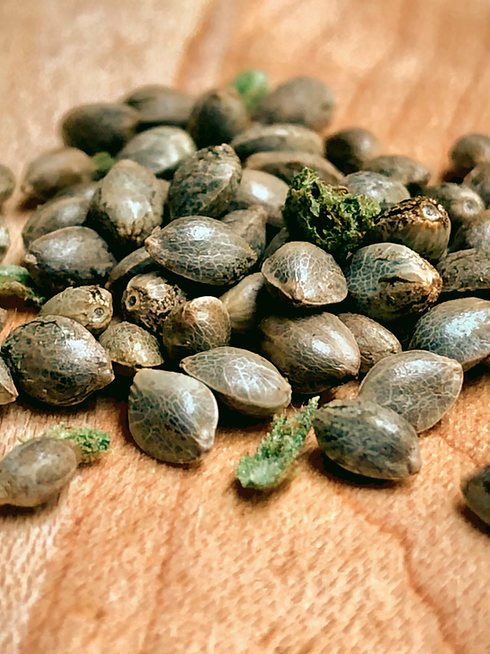
THE HERB - NOURISHMENT AND SUSTAINABILITY
THE VITAL-EMOTIONAL IMPULSES
Plants transmit the vital-emotional impulses, the life force that is hidden in light.
That is the gift, the grace, the power of plants.
Plants bring us love, the nourishing power of the sun,
which is the same energy of all the stars, of all light.
These cosmic energies emanated by plants thus
nourish, sustain, and... bring us to the universal light.
- Vasant Lad, “The Yoga of Herbs”


CANNABIS: A SUPERFOOD
Cannabis is a remarkable plant. Its thousands of possible usages make it one of the most versatile herbs available. Cannabis has the ability to be made into food, fuel, fiber and farma. It enables nations to be fed environmentally, physically, spiritually, economically, mentally, socially and peacefully through a diverse number of solutions.
STARTING WITH THE SEED
Hempseeds are considered to be one of the most nutritious superfoods known to man. Exceptionally nutrient dense, the seed is also easily digested by the body.
Hempseed has an excellent balance of all nine essential fatty acids (EFA's), including a near perfect balance of omega-3 to omega-6. In addition, hempseed flour is packed with protein and is soy and gluten free.
Hempseed contains 66 percent of the bioactive protein edestin — a protein used to manufacture antibodies. With its high levels of essential fatty acids and ease of digestion, hemp protein is an excellent alternative to meat for protein consumption.

CANNABINOIDS, TERPENES, AND FLAVONOIDS
The cannabinoids, terpenes, and flavonoids in cannabis work in tandem with the endocannabinoid system. The endocannabinoid system (ECS) has been called, “the most important physiologic system involved in establishing and maintaining human health.”
As a whole plant, cannabis’ full potential is still unknown. Because of government propaganda and draconian laws, the education and research necessary to understand this herb has been all but missing.


PERFECT MECHANISM
Hemp stalk fiber offers a perfect mechanism for sustainability used in clothing, building materials, bio-plastics, automotive, animal bedding, ropes, etc. After 90 years of prohibition, innovative manufacturing and production industries, global networks and markets are being created and built to utilize thousands of other applications for this plant, yet unknown.



